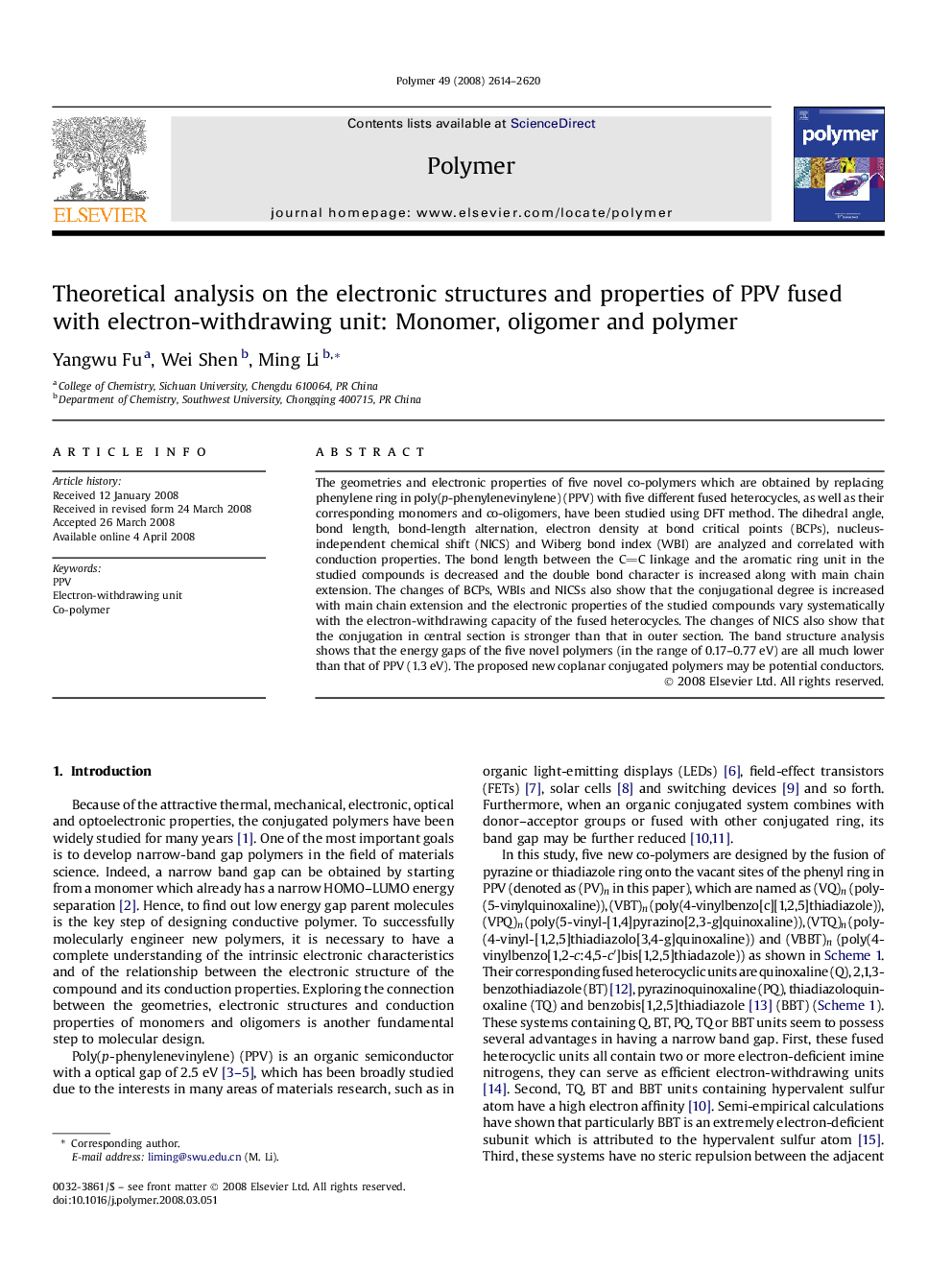| Article ID | Journal | Published Year | Pages | File Type |
|---|---|---|---|---|
| 5185498 | Polymer | 2008 | 7 Pages |
The geometries and electronic properties of five novel co-polymers which are obtained by replacing phenylene ring in poly(p-phenylenevinylene) (PPV) with five different fused heterocycles, as well as their corresponding monomers and co-oligomers, have been studied using DFT method. The dihedral angle, bond length, bond-length alternation, electron density at bond critical points (BCPs), nucleus-independent chemical shift (NICS) and Wiberg bond index (WBI) are analyzed and correlated with conduction properties. The bond length between the CC linkage and the aromatic ring unit in the studied compounds is decreased and the double bond character is increased along with main chain extension. The changes of BCPs, WBIs and NICSs also show that the conjugational degree is increased with main chain extension and the electronic properties of the studied compounds vary systematically with the electron-withdrawing capacity of the fused heterocycles. The changes of NICS also show that the conjugation in central section is stronger than that in outer section. The band structure analysis shows that the energy gaps of the five novel polymers (in the range of 0.17-0.77Â eV) are all much lower than that of PPV (1.3Â eV). The proposed new coplanar conjugated polymers may be potential conductors.
